Week 4 – February 24, 2011: History of Supply and Service
Today, AMA members think nothing about shopping for AMA merchandise from the Supply and Service department. Whether it be on-line, at trade-shows, or while visiting the National Model Aviation Museum store, Supply and Service provides a wide variety of AMA and aviation related products.
This service was not available to members until 1946, and was officially announced in the March 1946 issue of Model Aviation. The new “department would have available a supply of aviation periodicals, training aids, plans, and other helpful items for the model builder and club.” Also available were some of the necessary items for contest operations including “Official AMA Contest kits,” model identification labels, license number decals, flight time cards and flyer’s lapel pins which, due to rising costs, were no longer going to be included with Academy flyers licenses.
1. A 1940s era membership pin, a product available from the Supply and Service section when it first started in 1946. (Source: National Model Aviation Museum Collection, donated by George B. Armstrong, 2006.49.147.)
2. Announcement for the beginning of Supply and Service, 1946. (Source: National Model Aviation Museum Library. [“Washington Newsletter, Academy of Model Aeronautics.” Model Aviation, March 1946.])
3. An ad announcing the new literature, caps, decals and membership pins available for purchase, 1962. (Source: National Model Aviation Museum Library. [“Available Literature and Material from AMA,” Model Aviation, August 1962.])
4. An ad announcing new products and a change of organizational structure for the AMA Supply and Service department, 1964. (Source: National Model Aviation Museum Library. [“Under New Management, AMA Supply and Service Section!” Model Aviation, May 1964.])
5. Ad for AMA related products sold through Supply and Service, 1994. Source: National Model Aviation Museum Library. [“Tell the World.” Model Aviation, January 1994.])
6. & 7. The museum store, circa 1993. (Source: National Model Aviation Museum Archives, AMA Collection, #0001.)
Week 3 – February 17, 2011: Beginnings of the National Model Aviation Museum
The museum bases its start date on the date of the first fully documented donation to the Museum by Dr. Walter A. Good in 1978. That’s just an easy date for us to quote, though. If we wanted to, we could probably pick an earlier date.
In a 1946 Model Aviation issue, there was a list of suggested points for the Academy to consider, including a department of the AMA to exhibit model materials and associated items. Thirty years later, AMA Executive Director John Worth exchanged correspondence with Elinor McEntee about donating items to the AMA. Just a year later in 1977, he told George Clapp they were working on putting a museum together. In 1982, a group of well known modelers were invited to join the museum’s steering committee. When the AMA moved its headquarters to Reston, VA in 1983, the museum was formally opened as a physical reality.
Just after the museum opened in its doors in 1983, Hurst Bowers, Museum Curator, stated in an issue of Nats News;
“we want our museum to ‘tweak the strings’ of nostalgia for all the old modelers, as well as provide inspiration for everyone who visits Reston. The name of the game in modeling is pleasure and creativity, and we hope to provide and inspire both. As the late ‘Ross’ Hibbard once said, ‘nothing happens until you start cutting balsa’. Your museum is intended to make you want to do just that. The bottom line is the fact that this is your museum, and we want to insure that all modelers participate in this unique opportunity to portray the history of aeromodeling as it should be.”
Click images to enlarge.
1. ![“we want our museum to 'tweak the strings' of nostalgia for all the old modelers, as well as provide inspiration for everyone who visits Reston." (Source: National Model Aviation Museum Archives, AMA Collection, #0001. [Nats News, July 26, 1983.])](https://www.modelaircraft.org/sites/default/files/images/1983NatsNewsno2_small.jpg) 2.
2. 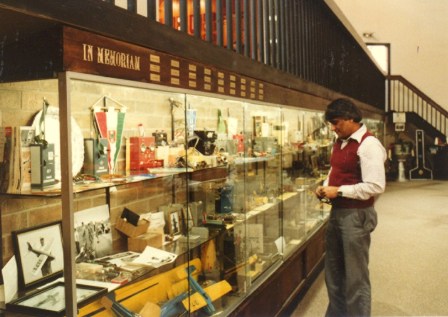
1. Here’s the scan of the 1983 Nats News. (Source: National Model Aviation Museum Archives, AMA Collection, #0001. [Nats News, July 26, 1983.])
2. Someone investigates the contents of a museum display during the Reston Grand Opening Ceremony, September 24-25, 1983. (Source: National Model Aviation Museum Archives, AMA Collection, #0001.)
3 & 4. Photographs of the Reston, VA exhibits, circa 1987. (Source: National Model Aviation Museum Collection, Accession file 1987.07. Photograph provided by the family of Dave Ritchie.)
5. Photograph of the Reston, VA exhibits, circa 1987. (Source: National Model Aviation Museum Collection, Accession file 1987.07. Photograph provided by the family of Dave Ritchie.)
6. A good overall shot of the museum displays in the Reston, VA headquarters building, unknown year. (Source: National Model Aviation Museum Archives, AMA Collection, #0001.)
Week 2 – February 10, 2011: The First AMA Member
August W. (Bill) Kleinhans (1920-2010)
Membership Number 101
Bill Kleinhans from Evansville, Indiana started modeling at age 12 in 1932. He quickly learned how to excel at model building on a small budget, and even taught others to build through the Work Projects Administration (WPA.) He joined the AMA in February of 1938 at a cost of one dollar.
Bill was also a member of a local club, the Evansville Radio Control Model Aircraft Club, as well as the International Gas Model Association (IGMA). He competed in over 170 competitions in his lifetime.
Why 101 and not #1? The AMA’s membership numbering system is a little different from traditional systems. In the beginning, numbers to new members were offered starting with #101. Numbers 1-100 were reserved for AMA Presidents (1-23 have been used so far.) Later changes to the numbering system included the introduction of Life member numbers (numbers begin with L), letting people chose their own numbers, and assigning members who had long lapses in their membership new numbers, sometimes even reassigning old numbers.
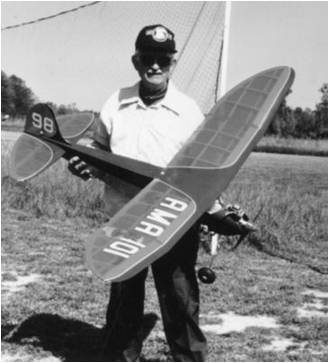
August Kleinhans with his AMA number on the wing, unknown date.
(Source: National Model Aviation Museum Archives, AMA History Program Collection #0018.)
Read more about Mr. Kleinhans in his History Program biography.
Would you like to share your modeling history? If so, read more about the AMA’s History Program and how you can contribute your story.
Week 1 – February 3, 2011: The Flying Eight-Ball Club
In 1946, the AMA was financially strapped and in dire need to raise funds. It was thought that the model industry could help with monetary donations, and there needed to be a gimmick to raise this money. To help out, the Flying Eight-Ball Club was created.
From a letter by Russ Nichols sent to Walt Billet March 10, 1953:
“As to how the “Flying Eight-Balls” started… it was originally a fund raising gimmick for the AMA. Al Lewis and I started it at the MIA [Model Industry Association] convention in Chicago just after Al was discharged from the Army. The idea with that anyone who made a contribution to the Academy received one of the ‘Flying Eight-Ball’ pins and was cautioned not to tell anyone what it represented. In this way, considerable interest and curiosity was aroused and we succeeded in raising quite a little money for the Academy. The original pins were made up by Al and me by gluing regular eight-ball pins on a few obsolete FAI pins which we found in NAA’s supply room.
“As to the names of former members, I am sure that I couldn’t even begin to list them since no records were kept but you can just about include all of the major members of the MIA as being former members of the “Eight-Ball Club.”
The Flying Eight-Ball club ran for 40+ years, through at least the late 1980s.
1. 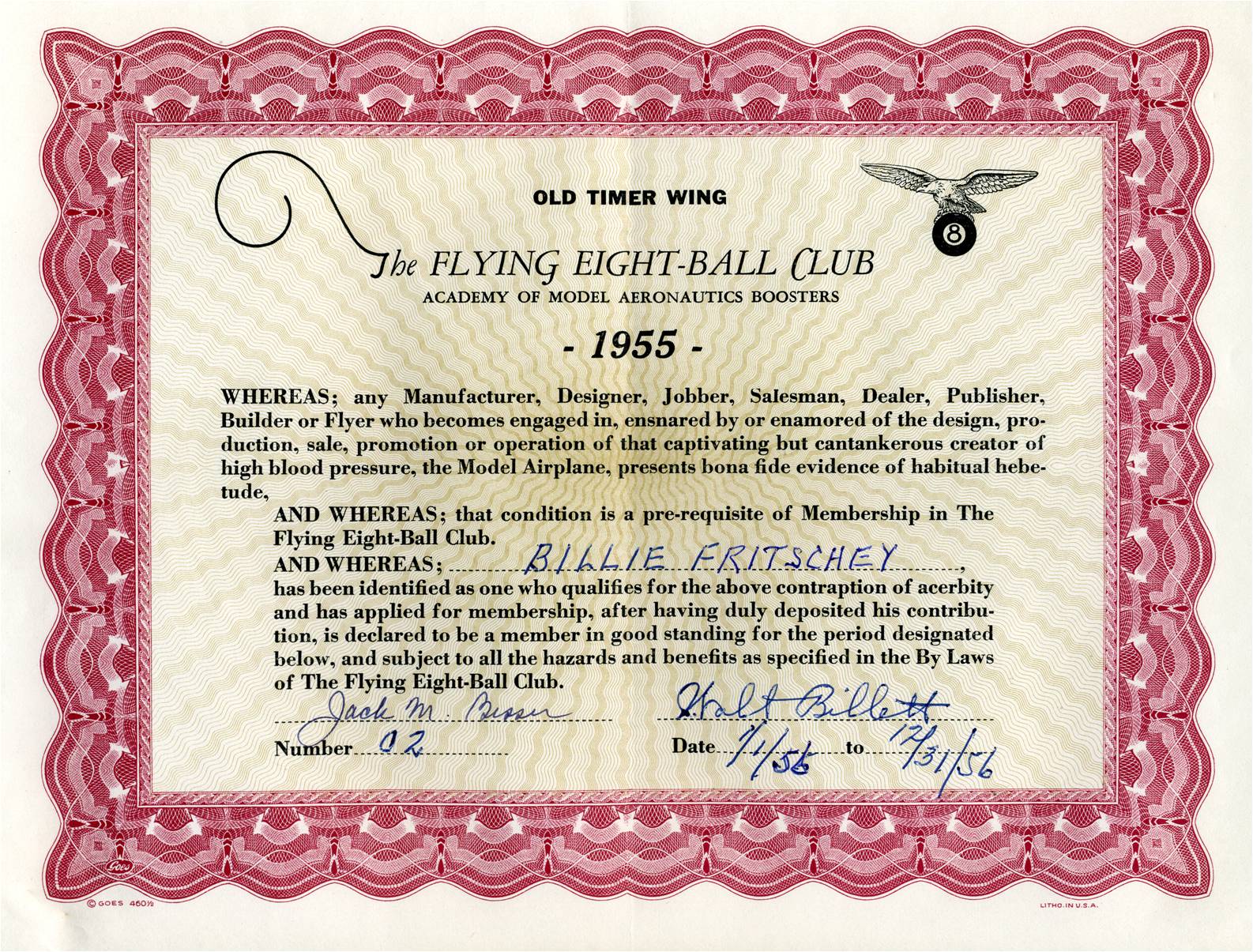
1. Flying Eight-Ball Club Old Timer Wing certificate, 1955. (Source: National Model Aviation Museum Archives, AMA Collection #0001.)
2. 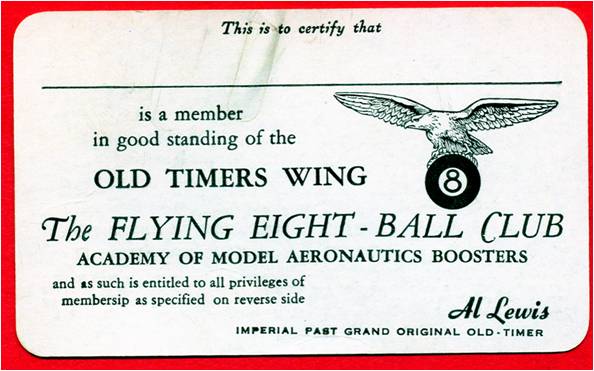 3.
3. 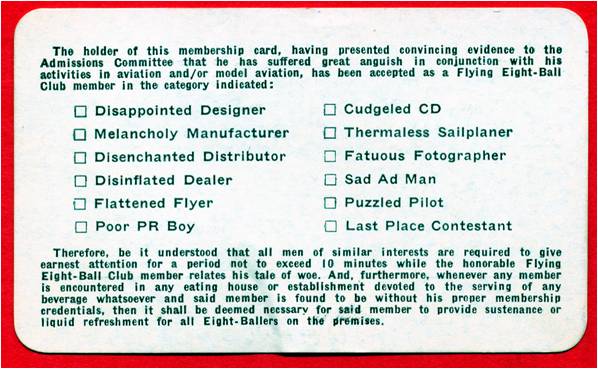
2 & 3. Front and back of club membership card, unknown date. (Source: National Model Aviation Museum Archives, AMA Collection #0001.)
4. 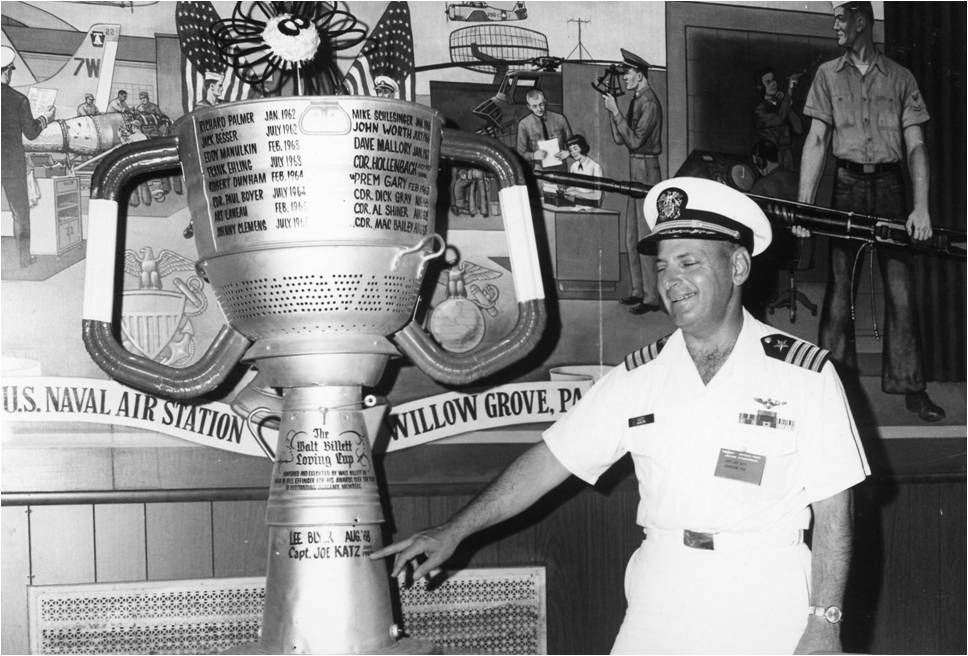 5.
5. 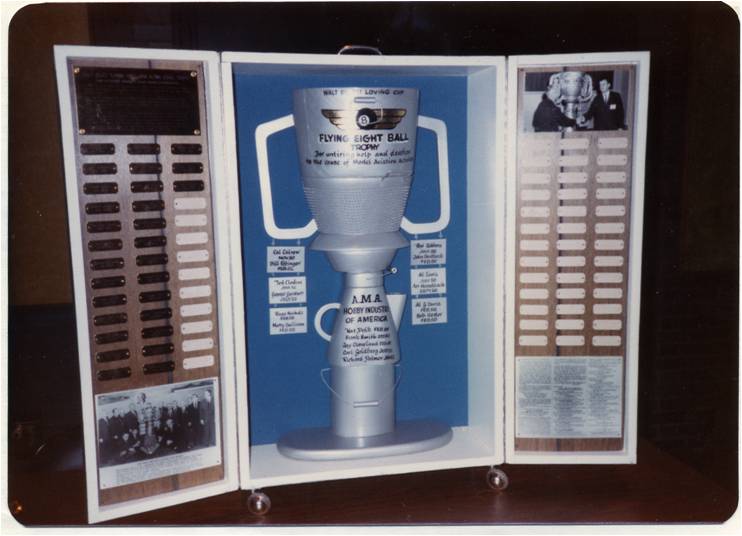
4. Captain Joseph T. Katz with the first Flying Eight-Ball/Walt Billet Loving Cup Trophy, July 19, 1969. (Source: National Model Aviation Museum Archives, AMA Collection #0001. Photo Credit: U.S. Navy.)
5. HIA Show, Chicago: The second, transportable Flying Eight-Ball/Walt Billet Loving Cup Trophy, January 1986. It cost $969.53 to make, coming in only slightly under the set $1000 budget. (Source: National Model Aviation Museum Archives, AMA Collection #0001. Photo Credit: John Worth.)
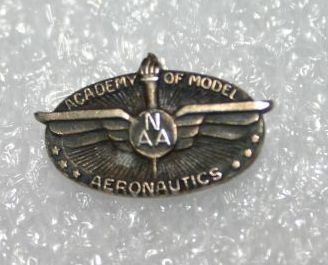 2.
2. 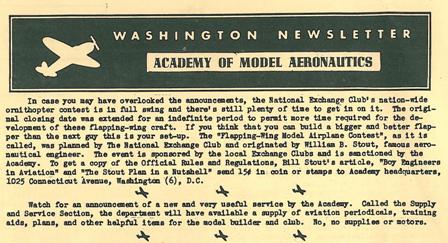
![An ad announcing the new literature, caps, decals and membership pins available for purchase, 1962. (Source: National Model Aviation Museum Library. [“Available Literature and Material from AMA,” Model Aviation, August 1962.])](https://www.modelaircraft.org/sites/default/files/images/1962masupplyservicead_sm.jpg)
![An ad announcing new products and a change of organizational structure for the AMA Supply and Service department, 1964. (Source: National Model Aviation Museum Library. [“Under New Management, AMA Supply and Service Section!” Model Aviation, May 1964.])](https://farm6.static.flickr.com/5300/5507503044_550fbe4546.jpg)
![Ad for AMA related products sold through Supply and Service, 1994. Source: National Model Aviation Museum Library. [“Tell the World.” Model Aviation, January 1994.])](https://www.modelaircraft.org/sites/default/files/images/1994MASupplyservicead_small.jpg)
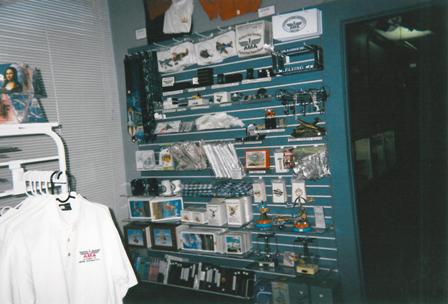
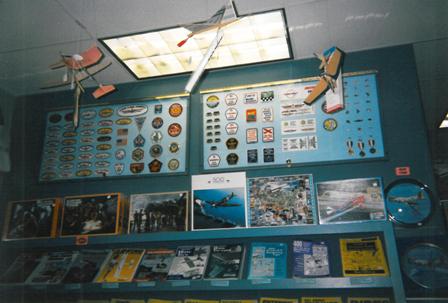
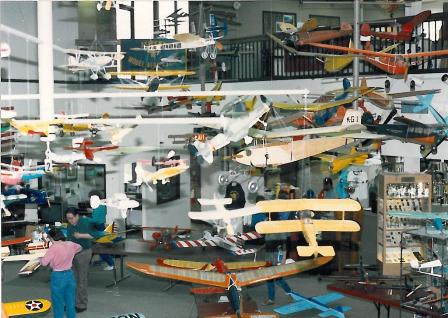
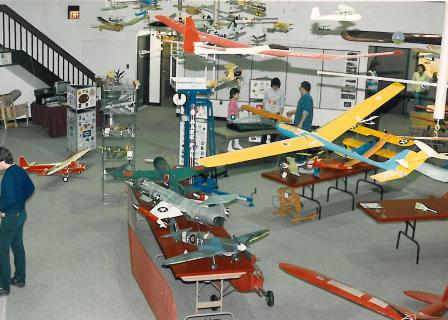
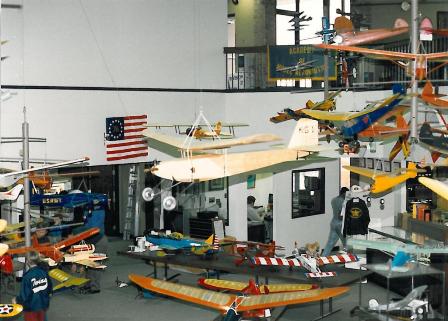
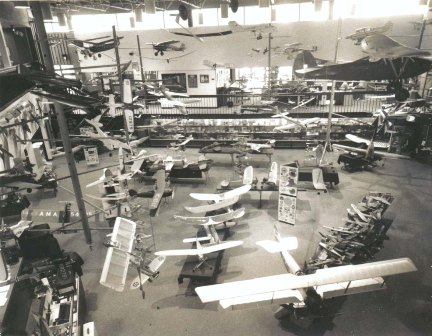
Recent Comments